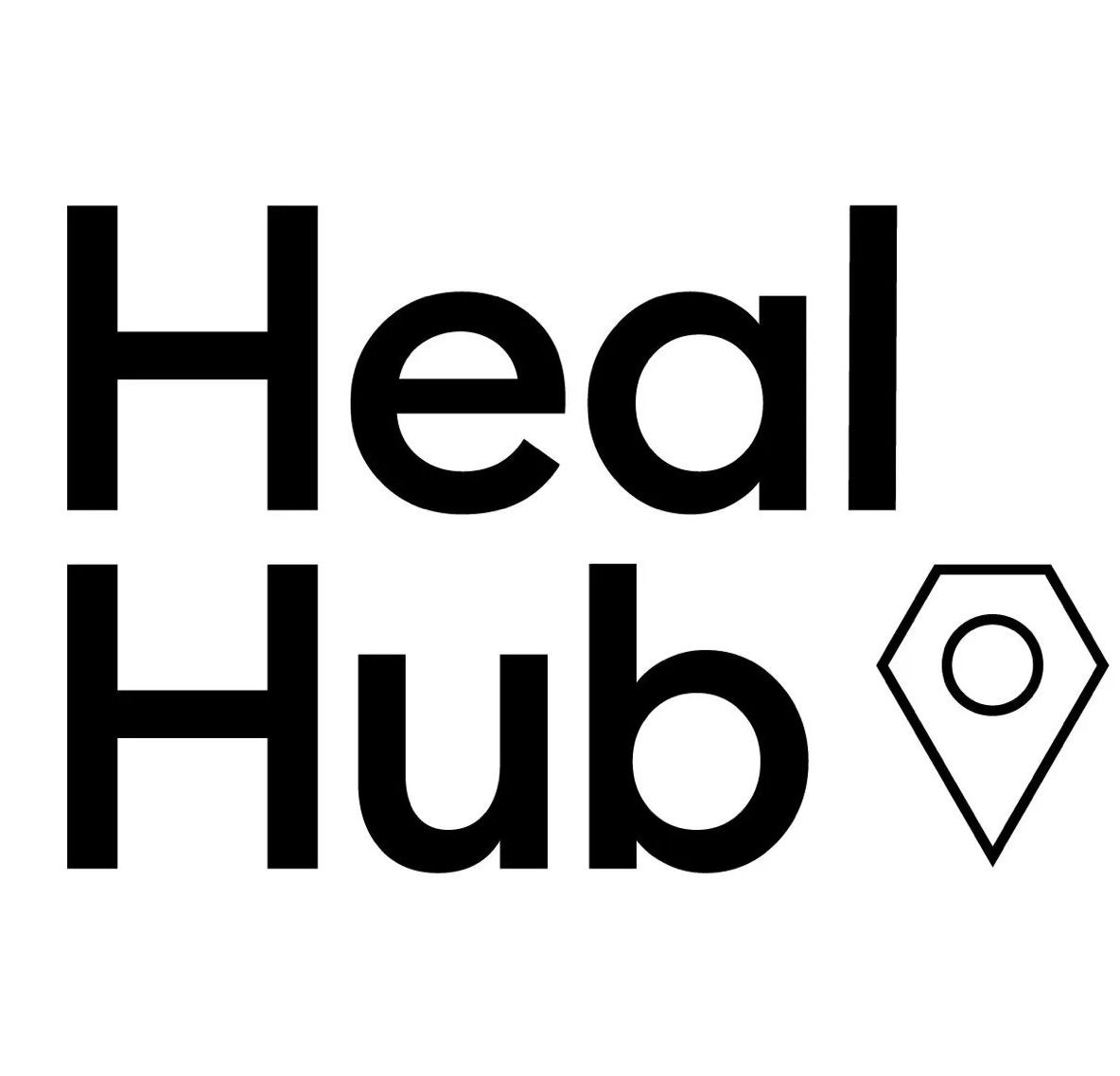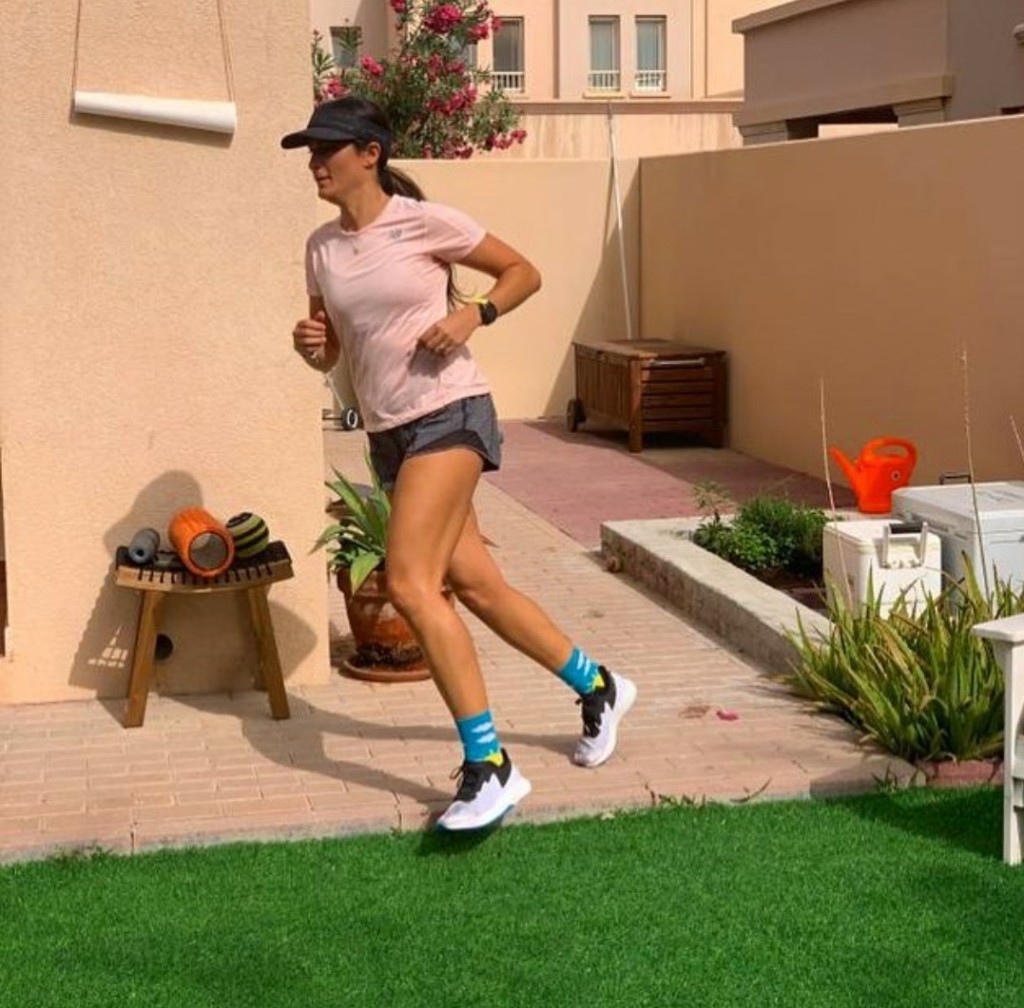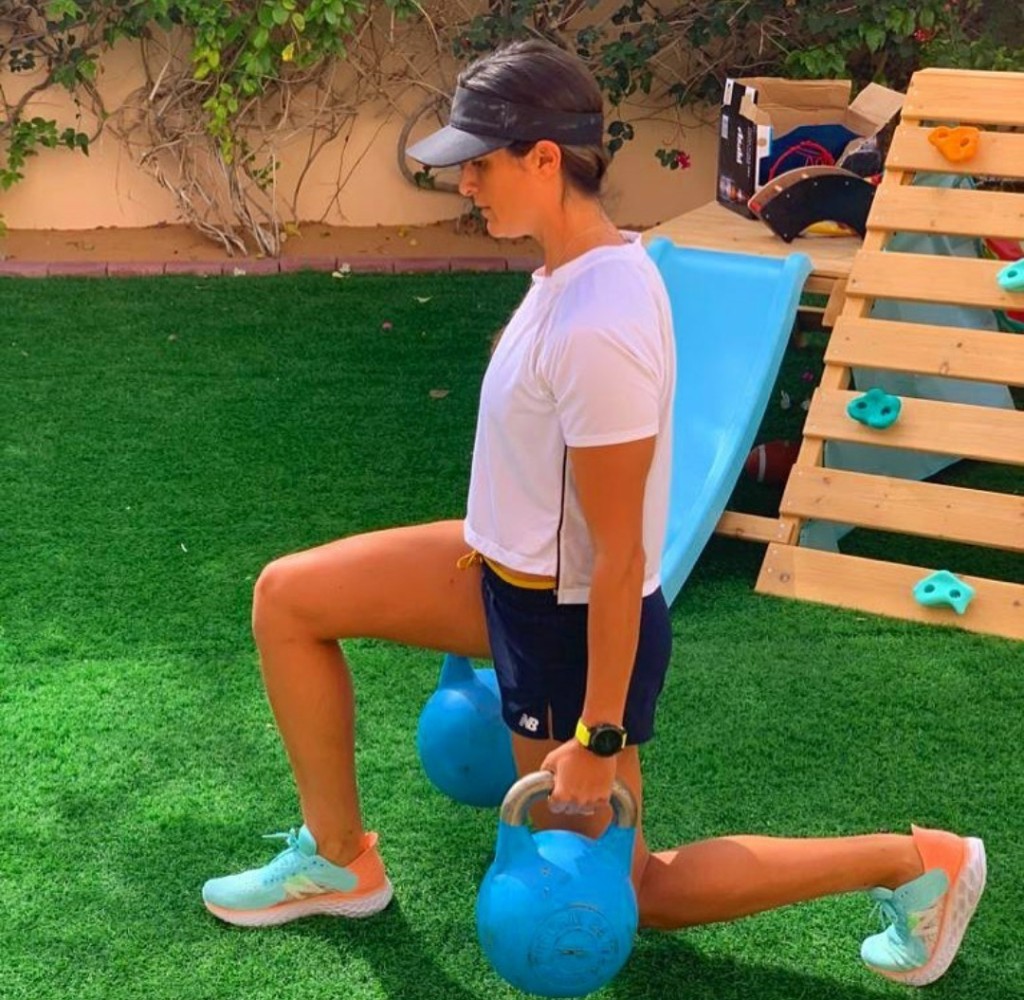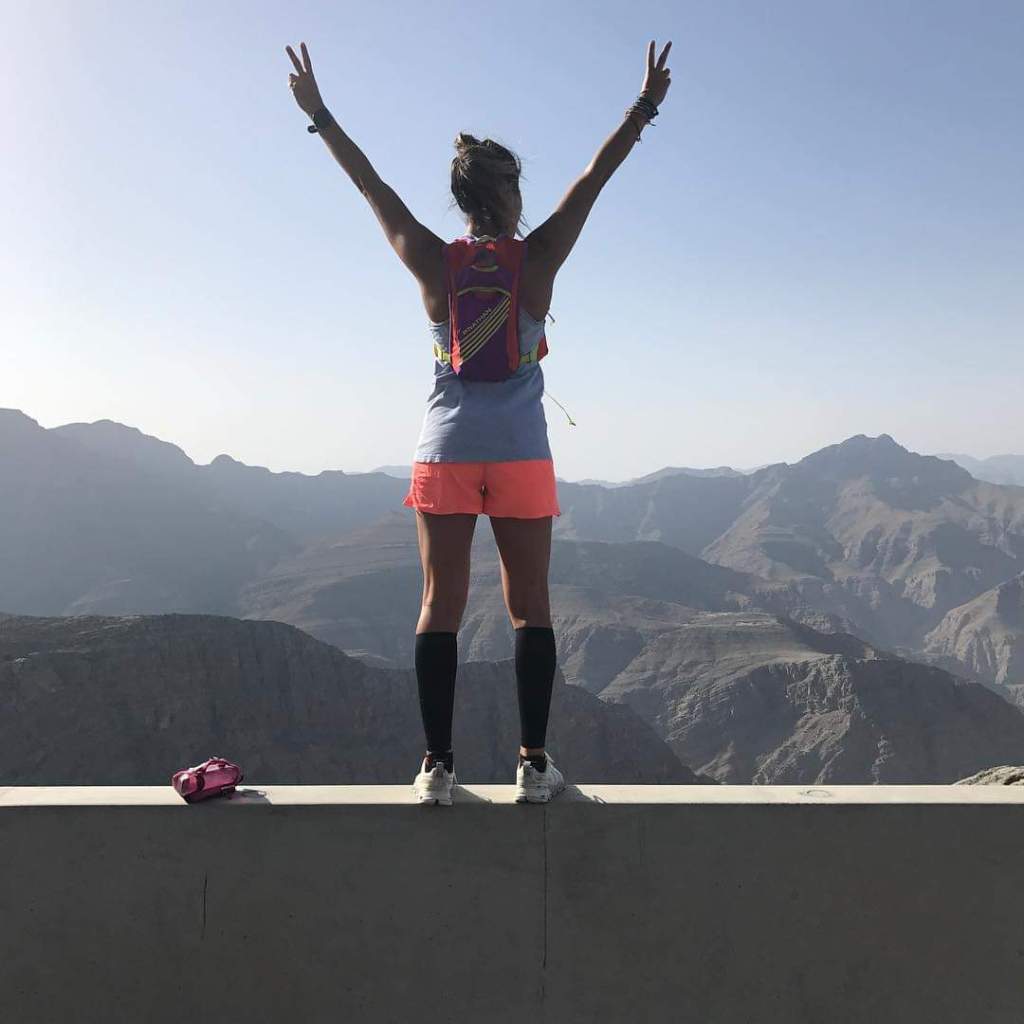Dr. Kirsten Evans (M. Tech: Chiropractic) and Tala Elajou (BsC in Biology and Marine Science, Level 3 PT with Active IQ, and Running Coach with UESCA)

DCIM\100GOPRO\G0190588.JPG 
“Endorphins, which are structurally similar to the drug morphine, are considered natural painkillers because they activate opioid receptors in the brain that help minimize discomfort. They can also help bring about feelings of euphoria and general well-being”.
We can only assume that being away from running has been like coming off a drug. Don’t know about any of you but we have certainly missed our endorphin injection. Running is a form of release for many of us, it’s our brief escape from the reality of the world and it can become highly addictive. Unfortunately, much has changed in the world over the past few weeks and many of us haven’t had that luxury of being able to run, we’ve been deprived of our daily/ weekly dose of that happy drug. Some of us have resorted to running around pools and gardens and others through apartment buildings and basements.

DCIM\118GOPRO\G7573911.JPG
There is now palpable excitement in the air as many countries are beginning to lift their lockdown laws and are starting to open their roads for recreational use. However, most have limited outdoor exercise to certain time constraints. From what we have seen on social media in the past few weeks, runners are hungry for that endorphin rush and are ready to go go go!
I had been limited to my apartment and 24 flights of stairs, which at first seemed like a great challenge and then became boring. Whilst Tala had her garden, which also seemed “runnable”, but she soon realized it wasn’t worth the damage it would possibly cause. The sharp turns and limited space would affect her stride and cadence, aggravate her ITB and result in an overuse of her dominant side which would have caused an imbalance. This resulted in both of us throwing ourselves into running specific “homework”. Strength, control and stability.
When lockdown started to ease and we were finally allowed to run, I didn’t feel as great as I thought I would. My calves were sore, I felt heavy and I couldn’t engage into a “faster gear”.
Tala explained it well, “That first run, especially, will feel as if it was the first time you’ve ever run. Even though a lot of strength work was done during lockdown, there is no secret to running fitness, you just need to run more and nothing can replace that. HIIT sessions do not replace your aerobic engine for running. However, having not run for 4/5 weeks you can’t magically expect to feel amazing on the first run”. We are both currently managing between 5km-8kms per run. Tala advises a maximum of 40/50kms a week of running.
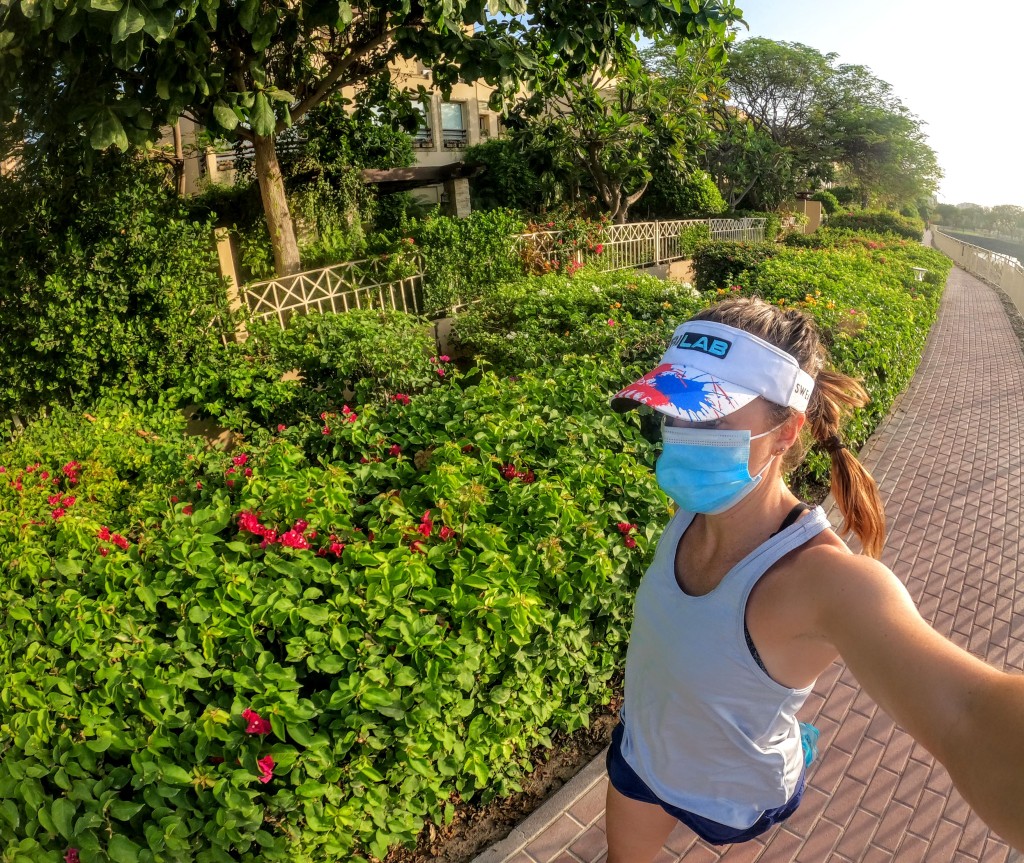
DCIM\100GOPRO\G0110349.JPG 
It has been very interesting watching people doing their creative home runs during lockdown and now even more interesting watching them coming out of lockdown. Some straight into a 12km, others 15km and we even saw a 22km run. Some very speedy, some very hilly runs. Here’s the thing, a garden 10km is very different from a road 10km. Forces, loading, stride and cadence are all very different. All the extrinsic factors (camber, training surface, corners etc.) are different. Even treadmill running is different from the road, tar is a lot harder and unforgiving.
To save you all from heading in the wrong direction, we thought we would put our heads together and share some of our best recommendations and advice (our pearls of wisdom). I am so fortunate to have Tala share her wisdom. She is a great runner and a fantastic coach, with heaps of experience.
Starting again
Did you know that it only takes 2/3 weeks of “de-loading”, for a tendon to lose strength? 80% of strength is lost in complete immobilization, which luckily a lot of us haven’t been subjected to. De-tensioning of tissue (a reduction in tensile strength) causes a disorganization in collagen thereby the tendon will not be able to handle loads as it did before. It is most likely that many of us, especially those without the luxury of home gyms and treadmills, have “de-loaded” most of the tendons in our bodies. This is why the next few weeks are vital for proper loading, i.e. correct return to running protocols. Balancing frequency, intensity and volume. Balancing hill runs and flat runs. Balancing trail and road. Running puts 2 to 2.5 times your body weight, in force, through your muscles, joints and tendons. Is it wise to get straight back to running 10kms, at your pre lockdown pace? Something to think about.
According to Tala, when returning to running, it’s the “back to basics” that matter most. Getting back to the time when you didn’t run with a GPS watch (before you even knew what it was), running by feel, which is where “tech naked runs” come in for all Tala’s athletes during their base building phase.
Technology is advancing as it always does. For many numerically obsessed runners, this means there are an ever increasing number of gadgets and websites where their statistical fantasies can play out. This is all very good for those who have the presence of mind to put into perspective the purpose of technology. However, coaches are seeing training loads change and resultant strange behaviours creeping in. Exhibit one, the extra laps of the car park to get an exact distance on the GPS. How many of us are guilty of this?
Tala also made a point that she is witnessing some of the intrinsic joys of running disappear. With carefree meandering around a new course being replaced by a focus on kilometer rates, cadence data, elevation achieved and Strava segment glory.
“My role as coach is to be the circuit breaker for this behavior, remove technology at times, set the expectations and encourage you to run for the sheer joy of running. This will take you back to your initial stage as a novice runner where the running world was a big mystery that lay ahead. Running with this state of mind is healthy and provides a refreshing outlook to those who may be getting too performance (or technology) obsessed. The aim is engagement, continued participation and establishing positive lifestyle choices. So by returning to the basics, maintaining the joy of running and taking part for the right reasons, goes a long way to meet these objectives”.
The month of May is all about easy, low heart rate runs. An easy run is an ideal “running by feel” workout. Why the easy running? Many runners need to learn how it feels to TRULY run easy. Even more so, your easy pace can vary by day, especially during high volume and/or high intensity training periods when you accumulate fatigue in your legs.
Ultimately, easy run pace doesn’t matter. Easy is a relative measure of feel and effort, after all, one runner’s easy pace is another runner’s 5K pace. If you run a pace which you deem slow, you may speed yourself up so much that the physiological stress of the workout alters and then you’re not really getting an easy run, just extra unnecessary fatigue.
To conclude and let’s be honest, most of us really have no idea when our next race will be. So why put that unnecessary pressure on yourself to perform? When will you ever get that chance to focus on your breathing or cadence or form or even the environment around you. Be mindful and present in your runs. Enjoy them.
As Tala put it, “The most damaging aspect to getting into running well, is ego”.
Keep an eye out for our Part 2, in which we will talk about running specific exercises and how to warm up.
Visit Tala’s page http://runwildrunfree.ae/about-tala/ to learn more about what she does.
